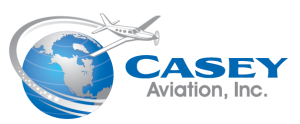One day at my home airport, the Cherokee County Airport (KJSO) in Jacksonville, TX, a King Air flew in and pulled up to Ridgeaire, an aircraft sales and brokerage firm based at KJSO. The pilot (I never got his name) got out and we struck up a conversation about his flight. I learned quickly that Ridgeaire had purchased the airplane from a firm in South Africa and this pilot had flown all the way from South Africa, up the African Continent, through Europe, over the North Atlantic, and down through North America to KJSO. I was floored. This had to be the neatest job in the world! How did this guy aspire to this position? How did he do it? Flying the airplane would have been easy, right? It almost assuredly was the regulations, cultures, and weather challenges that would require a person with tremendous skills, patience, and flexibility? I just didn’t know and I was bound and determined to find out. That was more than 5 years ago and since then I have pursued information so that possibly I could do it one day. I’ve got all the credentials and flight experience to do the job, but did I truly have what it takes to do the job?
So, I went to Brian Ridgely and Colt Weaver with Ridgeaire and started asking questions. We talked about the challenges and opportunities ferrying airplanes around the world, and then they gave me the best advice I could have received…call Margrit Waltz. I was bold enough to call Margrit in April of 2011 and so began a relationship that I have learned to cherish. We got along well from the start. She either sensed my passion for flying or was simply a friendly person. I’ve since learned that both are true. She is so vastly experienced as a ferry pilot and has such a kind disposition that she did not consider my questions a threat to her livelihood.
Margrit began to look for an opportunity to help me. It is not easy to take someone along on an international ferry flight. Some aircraft owners don’t want others along, some are worried about liabilities, and most ferry pilots are simply used to having the plane to themselves and won’t risk being caught in a relatively tiny cockpit for a long time with an obnoxious aviation novice. Margrit was clearly going out on a limb for me, and I was extremely thankful. In May of 2011, there was a flight from Europe, but I could not get back from my military duties quickly enough. In October of 2011, I called Margrit and lo and behold, a flight opportunity became possible.
The owner of N722PM wanted the plane returned to France after a maintenance event in the U.S. Frenchman Patrick, a friend of the owners of the airplane, came along to protect the owners interests and because it looked like a lot of fun. Marie (also French pilot), a friend of Patrick, came along too to assist Patrick with the language (I think this was a rouse because Patrick really spoke english well!). The hook that helped me get on board the flight is the fact that I am a flight instructor and Margrit is not. Since Patrick was not rated in the King Air, he needed a flight instructor to log the flight time legally. Viola! I had my seat. The only issue was that Margrit was going to be relegated to the back of the King Air with no access to the controls. Her trust in me was unbelievable.
We all met in Moline, IL where the aircraft was located and were airborne within an hour of meeting each other. I flew the airplane, Patrick served as the copilot and Margrit sat in the back keeping an ever-watchful eye on the professionalism exhibited in the cockpit. Marie sat in the back as well.
One of the first observations to be made about ferry piloting is the extreme need to quickly adapt to different cockpit layouts and avionics. The King Air had a Garmin 400 GPS, and I’ve flown thousands of hours with a version of that fine GPS on board. I thought this part of the deal was to be no problem, but the information was displayed on an EFIS that I’d never used. For the first 30 minutes of flight I had to hand fly the airplane and use raw data for flight navigation. Fortunately, the weather in Scranton, PA, our first stop on the route and an airport suitable to use to depart the country, was really good. I was able to make a visual approach and then use the next few hours on the ground to figure out the avionics. I had hoped to make a good impression upon my crew with my handling of the airplane, but this was not to be. It was clear to all on board that I did not know what I was doing with the avionics and my weaknesses were revealed for each to see.
We left Scranton a little later than we had hoped, ensuring a night arrival into Goose Bay, our first international destination. The remoteness of the Canadian wilderness cannot be overstated. There were a few lights along the edge of the water in some areas, but generally the land was dark. We were on top of an broken layer for most of the flight. When I do this flight again, I think the flight up to Goose Bay will be best made in the day so a proper appreciation can be made of the wilderness. My landing in Goose Bay was quite good and I finally flew the avionics like a pro, having had the few hours on the ground in Scranton and the nearly 4 hours of enroute time on the way to Goose Bay to sharpen my skills. There was light cold rain from a high overcast.


